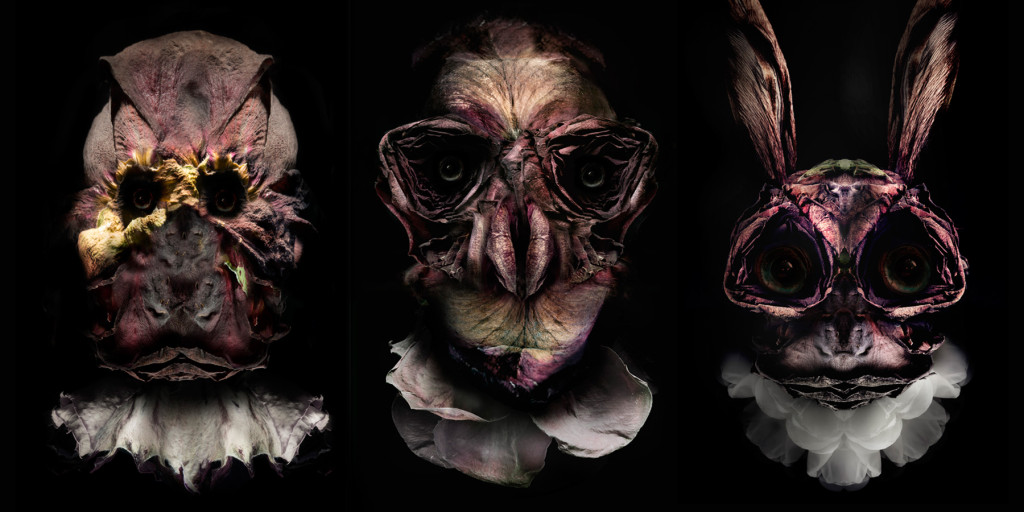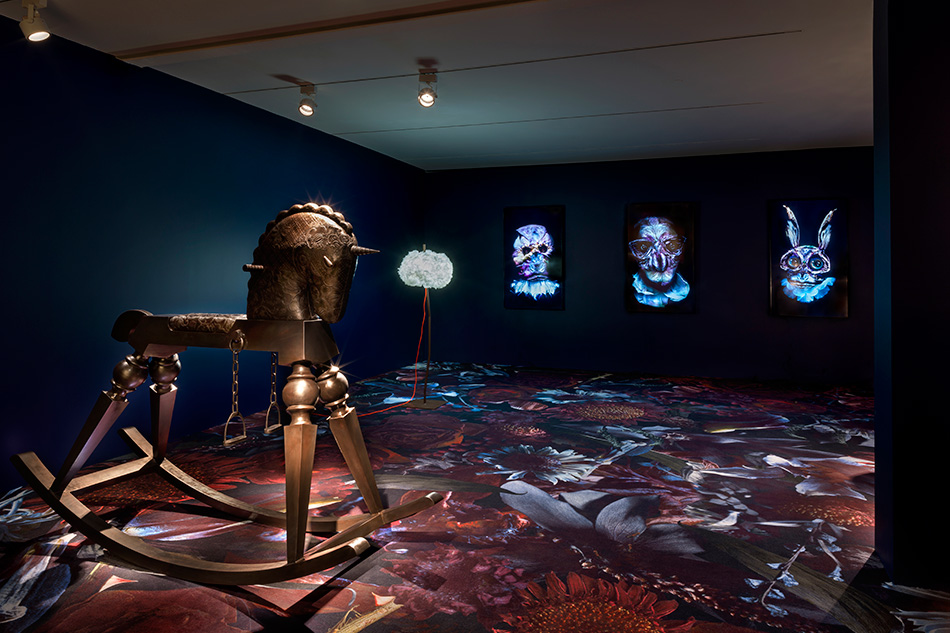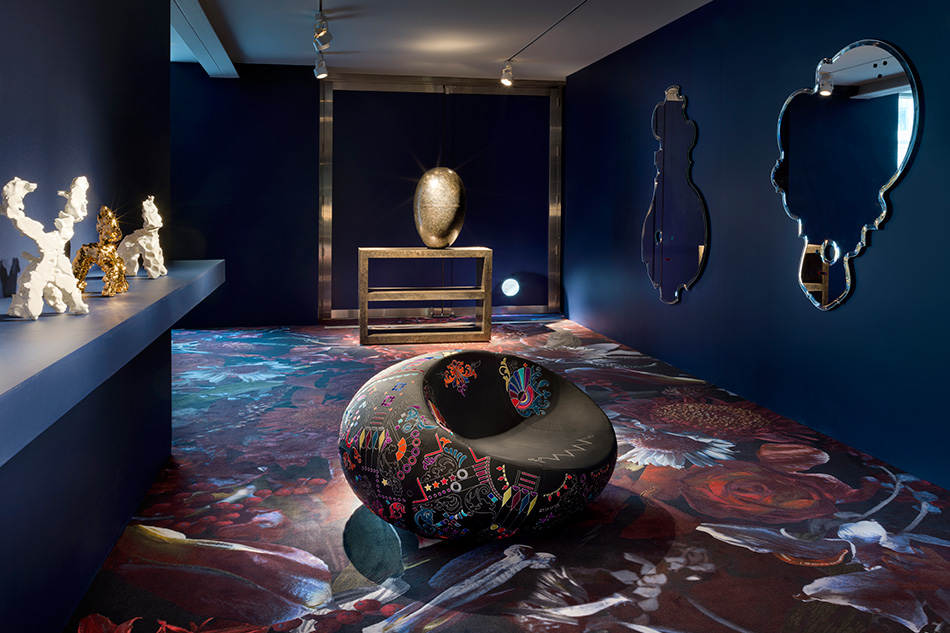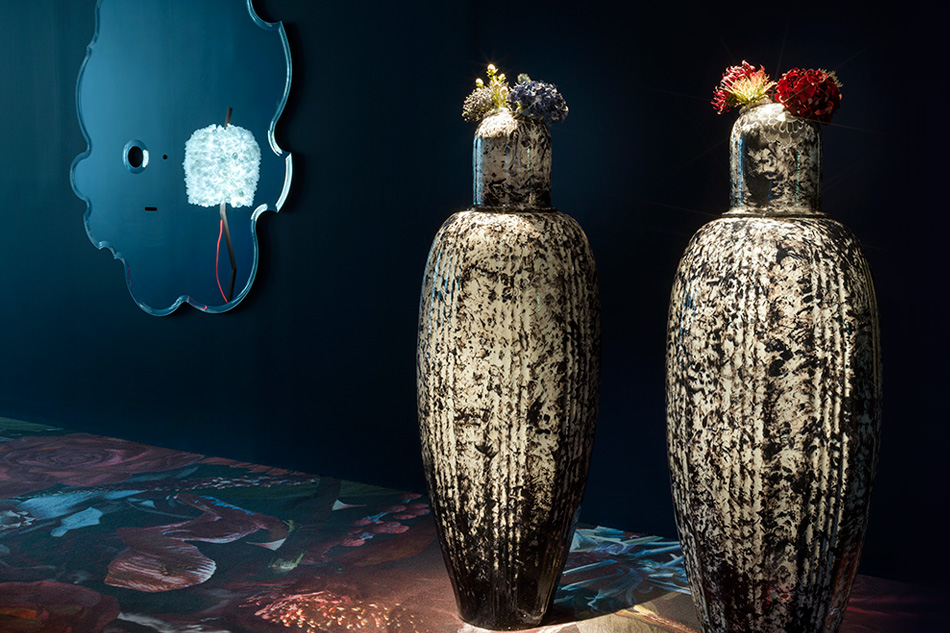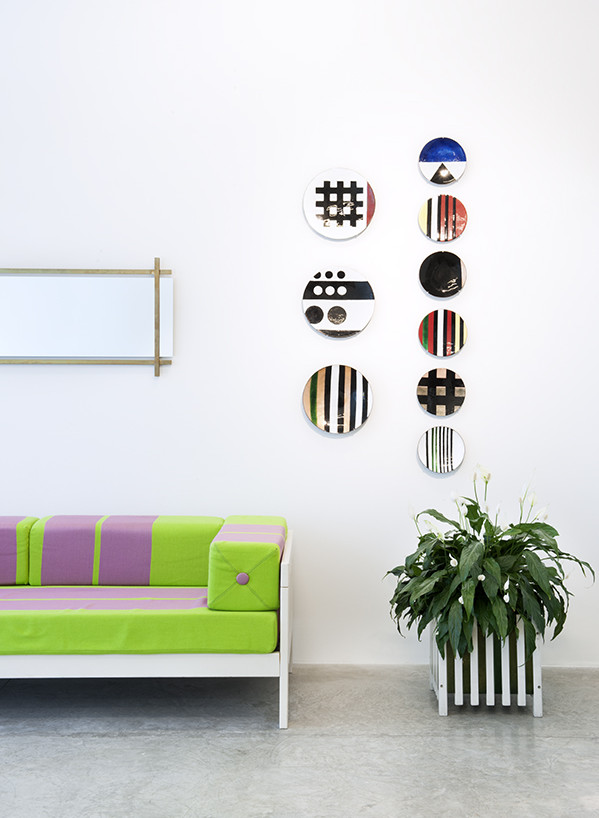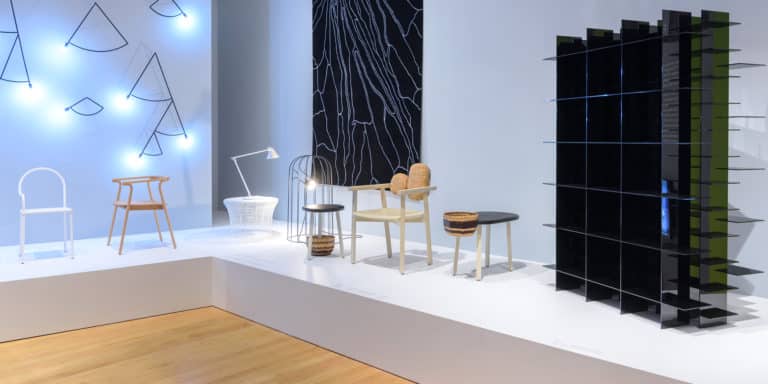
February 29, 2016Marcel Wanders expresses a rarely seen side of his personality in his first-ever solo gallery exhibition, “Marcel Wanders: Portraits,” on view at Friedman Benda until April 6. Top: The “Athanasius” series of video portraits, 2016, shows dead flowers mutating into faces. All photos courtesy of Friedman Benda and Marcel Wanders Studio
The exhibition title “Marcel Wanders: Portraits” sounds straightforward enough. But Wanders, the world-famous Dutch designer, is known for a sensual, searching approach that is predicated on visual surprises. And in this show, on view at New York’s Friedman Benda gallery until April 9, he has made a hard left toward moodier works that are more fine art than functional.
These are Dutch portraits all right, but they won’t be confused with anything by Frans Hals. There’s a sinister rocking chair with a touch of S&M about it (Tempter, 2016) and a series of large, amoeba-like mirrors (Dysmorphophobia 1, 2 and 3, 2015–16). The “Athanasius” series of video portraits from 2016 shows dead flowers transforming into faces. “At some point, I decided I needed another part of myself communicated,” says Wanders, 52. “I had been presenting a character that was not my complete self.”
Perhaps not, but it was a successful self indeed. Wanders gained massive fame in his 30s, first, and most lastingly, with the 1996 Knotted Chair, a beguiling carbon-fiber creation, made with the Dutch collective Droog Design, that seemed to be fabricated from strands of rope. Then came the simple, appealing and distinctive Egg and Sponge Vases. Global dominance soon followed, including hotel design — notably 2008’s Mondrian in South Beach, Miami — and corporate partnerships with brands like Alessi that continue to this day through Marcel Wanders Studio, which he founded in Amsterdam. He also cofounded the successful design label Moooi in 2001.

“These are subjects that are more personal and harder to put on the back of a corn flakes box,” Wanders says of the works in his current exhibition. Phoebe 3, 2013 (above), is a light fixture made of spinnaker cloth and nylon.
Marcel Wanders Studio has some 60 staffers working on 10 to 15 design partnerships at any given time and one big interior design project every year. But Wanders is, well, wandering, giving himself a chance to explore new horizons. Last year, he lived in San Francisco; this year he’s moving to Milan. “If I am in Amsterdam, in the studio, I am always disrupting the process,” he says. “I am kind of annoying. The staffers are super happy I am not there!”
A big part of his time is spent creating works like the 24 pieces now at Friedman Benda. It’s his first exhibition with the gallery, and his first show of this kind anywhere. “These are subjects that are more personal and harder to put on the back of a corn flakes box,” he says.
The ultra-spooky “Athanasius” videos definitely won’t be partnering anytime soon with Kellogg’s, or FTD florists for that matter. “It has been made from death, but it comes alive,” Wanders says of the series, which is beautifully composed and full of subtly modulated colors. “There’s a sense of nostalgia that serves the work.”
The catalogue for “Portraits” hints at some factors that may have set Wanders on this path. The photo collage Mondrian Still Born, 2013, is included in the book, although it’s not in the show, and it reflects Wanders’s disappointment with how his Mondrian hotel design was implemented and maintained. “I went around and photographed what had hurt me,” he says.
That sparked the “Virtual Interiors” series, photo collages composing totally fantastical schemes — one in the catalogue features cars being held aloft and moved around by large mechanical arms. “I started to make interiors that traded reality for eternity,” he says. “They will be good forever, because they will never be built.”

As its name implies, One Minute Sculpture, New York, 2016, didn’t take long to make, although its gilded exterior suggests otherwise.
That kind of dichotomy informs many of the Friedman Benda pieces. For instance, Self 1 and Self 2, both from 2016, are each composed of a heavy, egg-shaped form on a cabinet — one ensemble made of shiny steel, the other of dark steel. The eggs evoke human heads as styled by Brâncuși.
Perhaps the biggest departure in the show is evidenced in the handmade ceramics, such as One Minute Sculpture, New York, 2016, described by Wanders in the catalogue as “free-form 3-D sketches of lost pets.” Rare are the Wanders pieces that have a sweetness to them, most suggesting, instead, an intellectual remove.
“At one point, I was playing with my daughter, and she was making a little monster,” recalls Wanders (the unmarried designer has one daughter, Joy, who’s now 17). “And I am sitting there with a bunch of clay, and I put this object out — boom, boom, boom. And suddenly there are three of them.”
Each ceramic piece is unique and takes about a minute to make, as the titles suggest. “I limited my time, and I gilded the sculptures to give them a precious look,” he says, comparing them to Rosenthal’s ballerinas or Swarovski’s eagles.
The key to the exhibition may lie in the unresolved, multifaceted nature of the works. No attempt has been made to tidy up this artist’s contradictions — or to censor good ideas when they arise. “Every portrait in the collection is a portrait of me, but not only of me,” Wanders says. “They are portraits of all of us.”
